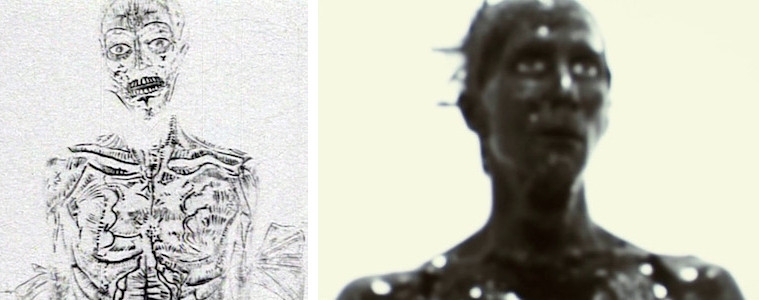The December Sight & Sound magazine includes me reviewing The Guilty, a Danish film about a police officer trying to control a tense situation down the phone which has been well received everywhere. Except by me, shrugging as I am at the theory that a sequence of duologues in one setting backed up by intelligent sound design is inherently cinematic, a notion that a few playwrights and radio dramatists might have something to say about. The name Locke has been dropped everywhere, this week’s example of critics fixated on content and oblivious to form, given the constant wash of colour and movement and reflections in glass that occupy Locke’s every frame, none of which The Guilty is even conceived to attempt. Plus the policeman at the centre of the plot is guilty of the most heinous offence a fictional white authority figure can commit. For a current film not to flay him open for it might be a suitably Scandinavian act of reconciliation, but raises questions about the film’s intent just in time for it to avoid them by ending.
 The Forbidden and Beyond The Black Rainbow: long live the new skin
The Forbidden and Beyond The Black Rainbow: long live the new skin
Horror films are always about form and content too, plus a certain amount of flaying. I liked The Haunting of Hill House, gingering up one model of horror story by the unlikely tactic of stretching it out to six times the normal length, and episode five ended with a blast of one of Alan Moore’s most poignant literary ideas about time and history; an unexpected place to find it, but there it was. And The Witch was on TV for Halloween, still sparse and terse and pagan, unknowably strange. But marooned as we are in an era when irony distorts everything like a fish-eye lens already, the more horror tries to be reflexive and ironic, the more the results fly apart under the strain. I’m not even convinced any more that the true core of horror fiction, the painful gaining of personal self-knowledge that has made it a young person’s genre for 200 years, is now best served by cinema in the first place, or that the border between parody and sincerity isn’t so weak that horror films can end up tripping backwards straight out of the door they just arrived through. How Possum can be treated independently of the fact that director Matthew Holness is a maker of parodies and written about as if he hadn’t now made another one, is a mystery. What is Sean Harris pulling that face for, exactly, if not that?
I bring this up having watched Mandy and the 1996 Clive Barker film Lord of Illusions back to back, two horror stories about cult leaders and the people they destroy, both of which are in more complicated relationships with their audience than either Hill House or The Witch. The dripping latex and early granular CGI in Barker’s film date it precisely to the minute, and although occult noir and its magical private investigators is a rock solid genre, Barker ultimately has a foreigner’s perspective rather than an innate feel for its tensions. But he and his fictions remain the only horror brand I really connect with, fully social and psychosexual and analogue. Barker’s starting point is always Jean Cocteau and Orphée, dreams and the sub-conscious, and he believes the old Cocteau principle of combining unsettling concepts with accessible imagery. “The closer you get to a mystery, the more important it is to be realistic,” said the old boy, and he was right. Barker’s also a libertine in the finest sense, and his films are voluptuously sexual.
Mandy is as voluptuous as a knee injury, and its presiding spirit is less Jean Cocteau and more Jim Steinman. To let ironic homage take the place of actual self-knowledge—and most certainly take the place of horror’s highest engagement with social comment or cohesion, which Panos Cosmatos doesn’t seem to have much interest in if this and Beyond The Black Rainbow are anything to go by—is to drag any art towards fan service, of which one drop goes a long way. Beyond The Black Rainbow presages some of Mandy’s specific shots but does without its dollops of shaggy hysteria, replacing it instead with a trancey-stupor metaphysical style conspicuously waving at Stanley Kubrick and Nic Roeg. But fan credentials will out, so it ends with a quote from Buckaroo Banzai. Once upon a time, a quote from Buckaroo Banzai was because the director had seen it and you hadn’t; now it’s just a statement of status, the least secret secret-handshake imaginable.
I’m particularly exercised here because one dvd on Cosmatos’s shelf is clearly Hellraiser, my favourite Barker of all, summoned explicitly when one of Mandy’s bad guys whistles up some demonic biker types, leather-clad wheezing rubes who are Cenobites by way of Psychomania. Meanwhile Black Rainbow has a flashback of the villain’s transmogrification via a pit of black ooze shot in high-contrast colour-coded negative, which sent me to Barker’s old short The Forbidden, shot in authentic negative and which ends with Pete Atkins covered in Vesalius anatomical etchings and adopting a very similar pose to camera. But Barker was falling back on instinct and symbolism and a budget of ten pounds fifty, and Cosmatos is apparently just falling back on Barker.